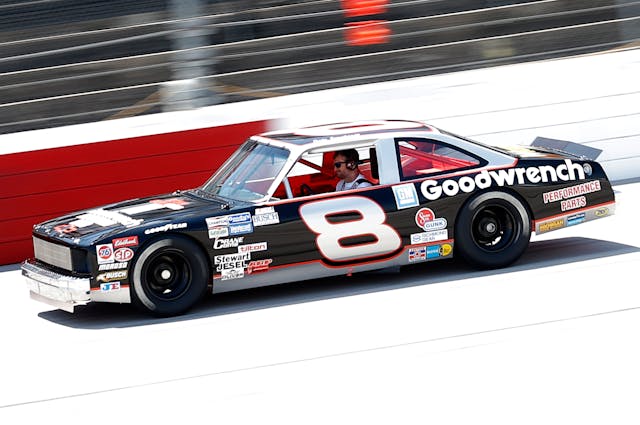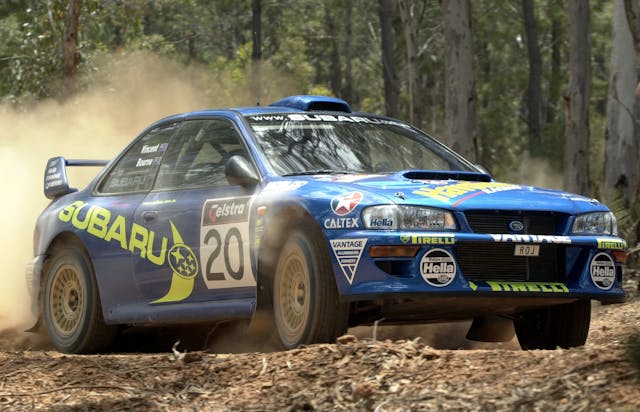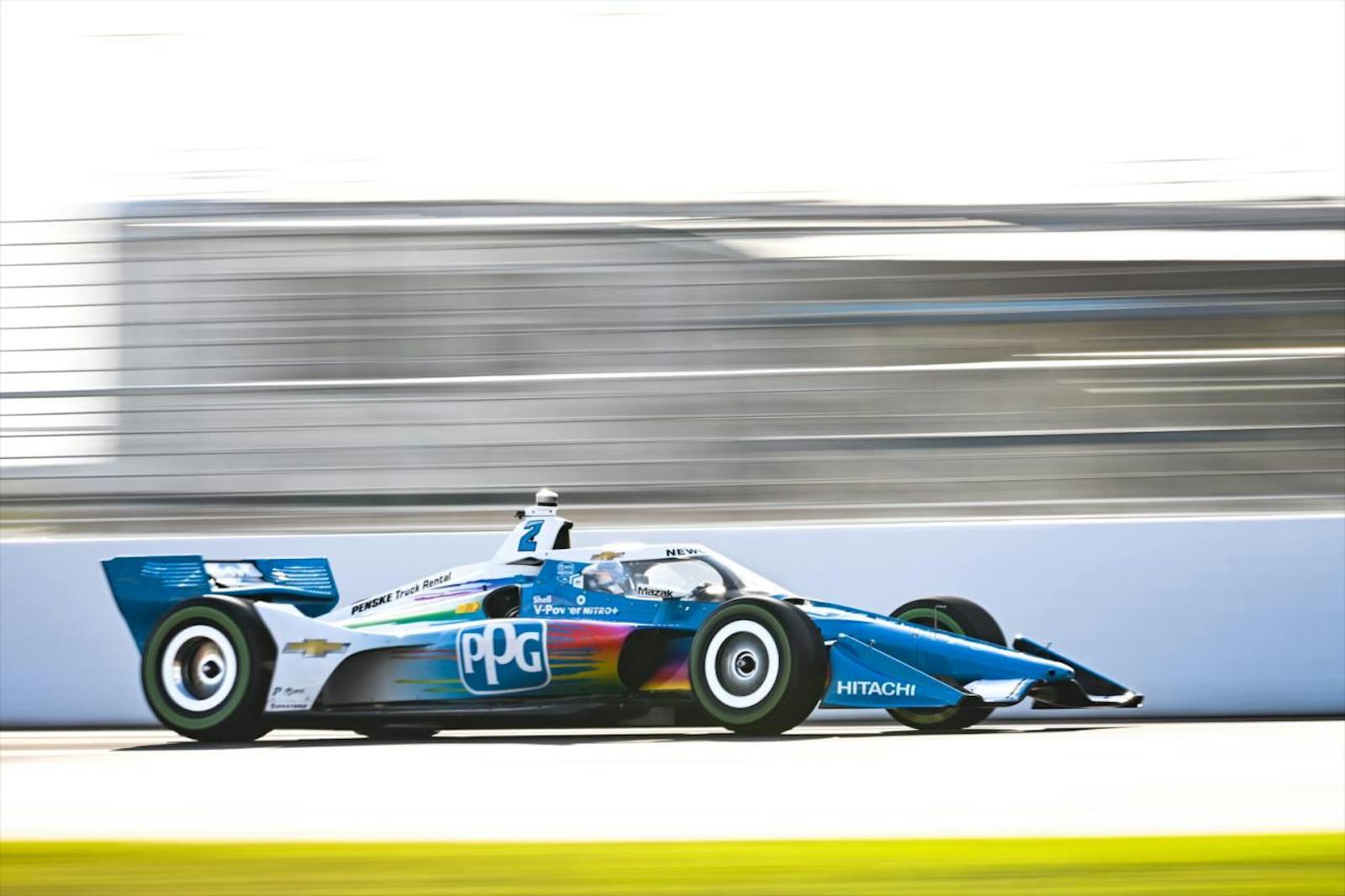The true stories behind 3 of the most frequently stolen racing liveries
The paint job of a race car is sacred. As much as these are machines of purpose and function, one of the last areas of free expression in a race design is the paint scheme—the livery, that one-off layout of colors and shapes that identify a race car in the field like an animal’s fur coat in the wild.
Car nerds like you and me have an obsession with some of these beholden schemes. Their ties to a specific car and time is something akin to the fragrance of an ex-lover; it forges an a nearly insoluble association in our subconscious, and finding it upon anyone else than the original wearer feels alien and close to offensive.
When manufacturers are looking to pay homage or draw attention to a particular model, however, they often turn to a nostalgic race livery to leverage the connotations of the past and reel in eyeballs. Here are three of the most commonly misappropriated paint schemes—and their true stories.
GM Goodwrench

It’s easy to see why Dale Earnhardt’s black-and-silver scheme stood out amongst the candy-colored field in NASCAR. So many cars shout for attention with pastel blues, glowing oranges, and a clashing of colors that serve to attract the eye by distracting it from the 200-mph clutter of cars on track, but The Intimidator’s blacked-out menace stood out on the grounds that you could easily find it at the front of the pack, or at the least, in the thick of NASCAR’s wildest moments through the ’80s and ’90s.
The livery’s value, of course, comes from Earnhardt’s aggressive driving style, itself the signature of a man who had the sheer gall to steal and race his father’s own circle car before entering his teenage years. Dale was determined like few others and truly feared no man on this Earth when it came to getting what he wanted on track. He was the first driver to match Petty’s seven Cup championships and remains one of the winningest drivers in NASCAR history, more than proving his dominance in the sport before his final race during the 2001 Daytona 500, a moment remains seared in memories of most of his fans.
That infamous #3 scheme has since been plastered on damn-near everything you can imagine, from lawnmowers to factory Monte Carlos, all doing their best to channel Dale’s 200-mph tenacity without putting in the lifetime of effort that he did … though we’ll let you be the final judge.
Gulf Oil

Zenith Blue and Tangerine Orange, the official colors of one of the world’s most famous paint schemes. The Gulf Oil company was an economic powerhouse in the mid-1900s, and its display of force could be seen in its grab for representation at the highest levels of motorsports.
Grady Davis, Gulf’s vice president, bought into John Wyer’s racing operation and began campaigning the now-iconic Gulf GT40 that would go on to secure a late victory in its endurance-racing career with consecutive victories at Le Mans in 1968 and 1969. Notably, these wins came after organizers pulled the GT40’s side-oiler 427-cubic-inch big-blocks in favor of a production-like 289-cubic-inch small-block, which had already pushed Shelby American to victory in the prior two years.
Next came what still remains one of the most recognizable Gulf machines at Le Mans, the Porsche 917K. The Gulf-liveried Germans would dominate the World Sportscar Championship season in 1970 though ironically they fell short of a victory at the actual 24-hour enduro in the French countryside. Instead, the 917K legend was cemented not on the Mulsanne Straight, but on a film reel, thanks to Steve McQueen’s movie Le Mans. In the fictional narrative of the 1970 race, the 917K managed to claw through war and terror—McQueen’s character battled PTSD rooted in the memory of a competitor’s death at Le Mans—to claim victory. The film’s raw, action-focused direction lacks in the kind of “plot” and “story” that enchants critics and the general public, resulting in a box-office flop—but, to gearheads, the film is damn-near seductive.
While other vehicles fronting either Porsche and McLaren factory efforts would carry the the Gulf brand’s colors well beyond the oil giant’s corporate demise, the Gulf livery has also been commandeered by low-buck racers and well-meaning late-model Ford GT owners with a penchant for looking at cars with, well, coffee. Its presence in-period was too strong to ignore, but it’s quite possible that without McQueen’s efforts, the Gulf colors might be locked in history books and hidden in private collections instead of splashed across Apple Watch straps and coffee makers.
Subaru World Rally Team

If you’ve spent any time in today’s Subaru scene, you’re quite familiar with the World Rally Blue Imprezas that flock to any given meet. Owners are often a sticker pack away from dressing up their Subie as one of WRC’s most infamous racing efforts: the Subaru World Rally Team. The central argument for the manufacturer’s symmetrical all-wheel-drive system (a simple, robust full-time system with equal-length half-shafts at each corner), rally racing became key to Subaru’s street cred and success of the second-generation, U.S.-market GD WRX.
Technology aside, though, it was the insane ways in which factory drivers bent WRC’s stages to their wills that exalted the 555 livery (which actually debuted on the first-generation Legacy sedan) into impressionable minds. Rally racing, especially in the days of stock-chassis-based missiles that defined the 1990s arms race between Subaru and Mitsubishi factory teams, was more a war of attrition than a test of driver talent. Whether by design or sheer luck, Subaru’s ownership of WRC was won despite stacks of broken parts and bent sheetmetal. “When it doubt, flat out” was Colin McRae’s classic mantra, and that belligerent persistence to finish at all costs, no matter how many body panels and wheels might be missing, was shared by the likes of Petter Solberg, Richard Burns, and Chris Atkinson through the peak of Subaru’s rally efforts in the early 2000s.
In large part to the late-night rebroadcasts of WRC racing on the Speed channel, blurs of blue and yellow built Subaru’s performance reputation here in the States long before it imported the WRX and STi sedans—both of which could also be found with factory gold wheels. It’s no wonder, then, that the classic 555 scheme has become ever popular in the Subaru community.
While the chromatic kleptomaniacs misappropriate anything they can for clout, these are three of the most commonly stolen liveries and their true legacies. That said, we want to hear in the comments which sacred paint scheme gives you the stink eye when it’s draped over a copy-cat.


